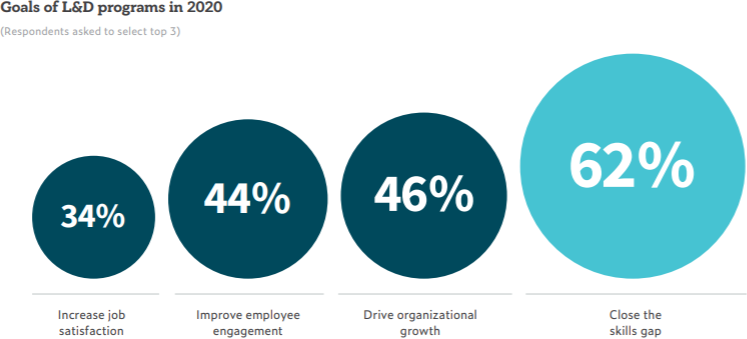Our Services
Linking business and people strategies

For any organization, people are a key differentiator. Sports teams are a perfect example. In other entities, people play a decisive role in creating or destroying economic value through their behavior; by providing superior customer-focused service or seamless recruiting, error-free manufacturing or other distinctive performance like product innovation. For this reason, the more explicitly the organization/business strategy and the people/HR strategy are intertwined, the more consciously leadership can embed the company purpose into all aspects of the organization to help inspire employees and inform their decision making to meet inevitable competitive challenges. When an intertwined business/ people strategy is owned collectively by the CEO and key executives, and contains a well formulated path to get from A to B, then this leadership team will be better able to determine whether its workforce has the knowledge and skills capability to meet anticipated future challenges and create economic value. Then the Head of People and team proactively facilitate and project manage the specific programs, issues, projects, and activities championed by executive management to generate that value.
- The first is to create the context and systems to enable the achievement of immediate goals and objectives articulated in a business plan; for example, grow revenue by 15%, increase new product sales by 30 percent of total revenues, place 100% of youth into apprenticeships, improve our supply chain management and reduce costs by 8 percent, etc.) Each of these goals requires specific talent, resources, focus, and execution.
- The second is to prepare the workforce for unexpected change with strategic workforce planning, change management, communication, and training.
HR Audits
Compliance
Best Practices
Strategic
Function-Specific
Change Management Solutions
Change Management is the organized discipline that helps improve an organization by bridging the gap between where it is in the present and where it wants to be in the future. A Change Management approach, much like a road map, helps to plan, guide, and execute over time, the ways to prepare, equip and support people to successfully adopt change in order to reach desired outcomes. An effective change management approach includes identifying the leadership team whose job is to meet a timeline for execution and completion once it is determined which business processes, job roles and training, communication, organizational structures, and technology will be needed to bring the organization to its future.
At the individual level, Change Management requires understanding how people experience change, what they need to change successfully, and what will help people make a successful transition: what messages people need to hear when and from whom, when the optimal time to teach someone a new skill is, how to coach people to demonstrate new behaviors, and what makes changes “stick” in someone’s work.
At the organizational level, change management involves identifying the groups and people who will need to change to achieve desired outcomes, and in what ways, once they receive the awareness, leadership, coaching, and training they need in order to change successfully. The competitive pace of technology and innovation today has demanded significant organizational involvement of many individuals across an enterprise whose work across multiple departments, functions, divisions, locations, countries, and continents can collectively impact the organization.
At the enterprise level, change management is an organizational core competency that provides a competitive advantage because it means that change management is embedded into roles, structures, processes, projects and leadership competencies. In an organization with enterprise change management capability, individuals approach change more quickly and effectively, can respond quickly to market changes, embrace new strategic initiatives, and adopt new technology more quickly and with less productivity disruption than its competitors.
Call WorldWisePartners when you are facing any kind of change. We can facilitate any one of 6 or 7 highly recognized Change Management approaches to help organize your solution, plan for potential pitfalls, and keep communication channels open to inform the progress of the transition. We bring solid, experience-based, certified knowledge of the factors that work to implement, measure, and sustain change.
Talent Management Solutions

The primary purpose of talent management is to create an agile, motivated, innovative workforce that will grow with and drive your company over the long run. Talent management is a continuous, iterative process which involves how an organization attracts and selects high-quality employees, places them into the right role, engages, manages and rewards, coaches them, and motivates them to stay with the organization while improving their performance through innovation and purposeful development. Finally, it includes performance evaluation to help employees confirm their strengths and opportunities for growth.
Every organization needs to begin with a talent strategy tailored to its entity alone. Only then will it be able to attract and retain the right talent to gain a competitive advantage over others in its industry.
WorldWisePartners can support organizations through the many steps of the Talent Management processes to provide clarity and direction. When the right people for the right roles have been identified — guiding, mentoring, coaching, and training them, optimizing their capabilities and skills will do much to retain them. Moreover, it will facilitate their professional growth and progression into positions of greater responsibility—which is an important part of any strategy to grow and outperform your competitors.

Learning and Knowledge Solutions
“The large majority of employers recognize the value of human capital investment. An average of 66% of employers surveyed expect to get a return on investment in upskilling and reskilling within one year. On average, employers expect to offer reskilling and upskilling to just over 70% of their employees by 2025.” – World Economic Forum

Research reports completed in 2020 reveal trends shaping the post pandemic workforce and have actionable insights to share. McKinsey research reveals that the pandemic may accelerate some workforce trends already underway, including the accelerated adoption of automation and digitization, increased demand for contractors and gig workers, and more remote work. Udemy for Business addresses the requirement for learning agility in the new decade.
- "A learning culture is critical for keeping up with workplace transformation: The workplace is changing so fast that many companies are struggling to keep up. Companies that treat learning as a strategic asset understand this and keep moving forward.
- A learning culture can help close our skills gap: Losing highly skilled employees can be a significant drain on company resources. Gallup estimates a 100-person company with average attrition rates spends between $660K-$2.6M on turnover and replacement.
- A learning culture fuels innovation: When upskilling is encouraged and available, employees are more likely to experiment and innovate. Case studies from companies like Accenture and DBS Bank have shown that learning powers curiosity and company performance.”

We can support you by evaluating your culture and help your learning culture transformation.
Learning is a catalyst for growth and new connections, for creativity and differentiation.
In this post-pandemic decade, differentiation will be continuous. Differentiation (think Apple, Amazon, Google or Tesla) is a function of creativity—just how deeply, how broadly, and how systematically an organization can unleash and leverage human potential—wherever it exists. Organizations and leaders today must focus on unleashing human capacity—designing environments and systems for work that inspire individuals to contribute their full imagination, initiative, and passion every day—and on aggregating that human capability—leveraging new social, mobile, and digital technologies to activate, enlist, and organize talent across boundaries.
Let us introduce your organization to the latest examples of real-world stories, pioneering ideas, progressive practices, and innovative ideas. Let us introduce your organization to how making the connection between unleashing human potential and the creation of real value in the world will benefit your organization. We can review and recommend learning processes, or specific interactive classes that are immersive, engaging, and based on the latest research into effective adult learning.
We can enhance your teams’ skills and expertise through carefully tailored single-and multi-day sessions that can be delivered in person or via live, virtual training.
These customized learning programs can extend and embed the human capabilities that boost both individual and organizational performance.
Let us help kick start your journey to skills development, differentiation and innovation.
Global Leadership
Key leaders operating globally are required to face and expertly understand, relate to and deal with more types of competitors, customers, governments, and stakeholders than those who work in domestic settings. It is not just more, but more and very different, with people and issues that are culturally, economically, politically, and managerially more diverse.
As the number of people and issues geometrically increases across the globe, the sheer weight of the size, scope, and breadth of this expansion—especially for those who are ill-prepared– can bring feelings of frustration, bewilderment and demoralization which can result in behaviors that range from exhaustion to decision paralysis.
The tendency to invest in global leadership training for high potential managers while excluding everyone else from its benefits is not an effective strategy in this age of globalization. Most employees can benefit from basic global competencies which can be accomplished by embedding cultural intelligence and adaptability throughout an organization. This approach can establish a basic level of cross-cultural awareness, interaction skills and access to resources and knowledge about global issues. Beyond
this, global leadership skill can be cultivated by position instead of a “one-size-fits-all” training focus.
We provide a framework to assist executive management better understand the strategic development of effective global leadership development programs. We offer a means to decide which competencies should be included in global leadership development programs and how to approach developing those competencies. We work with your senior team to define or redefine your purpose to ensure alignment on a compelling view of the future.
WorldWisePartners can help identify your most promising mid- and senior-level executives and support their preparation for a global role in several ways: individually and with their family, through a continuum of self-directed learning, interactive small-group programs, or multi-day classes, all built around stimulating exercises carefully designed to ensure participants receive the most relevant learning experience possible.
Finally, we confirm the most important actions needed to execute on your strategy and get results.


Diversity, Equity, and Inclusion


Onboarding:
Bringing a new employee into an organization, which occurs in the early part of the Talent Management process, is recognized as “onboarding,” It is a widely misunderstood and vastly underutilized aspect of Talent Management because it is often underestimated how difficult it is for new employees to adapt to a new job and culture. It is also the primary deterrent to employee engagement and speed to productivity and contribution.
From the first day on the job, an organization has the opportunity to engage and win the hearts of new employees. Studies show that effective onboarding has four times more power than compensation in winning discretionary effort from new hires who learn their new jobs faster, retain what they learn longer, and demonstrate overall accelerated productivity when onboarding is carefully and thoughtfully planned and executed.
Effective onboarding demands that every ‘touch point’ with a candidate –from how travel arrangements are made to visit campus, to how the receptionist greets that candidate, to how recruiting staff, peers, and leadership engage the prospective candidate — all leave clues for that candidate whether they are likely to fit into the new team and the company.
A recent survey of HR execs showed that 80% of companies do a poor or mediocre job of acclimating new employees. That means huge amounts of money on advertising, search fees, testing, background checks and pre-employment interviews to find the “perfect” candidate – risks being thrown away if the candidate’s transition into the organization is mishandled. This can lead to a preventable failure rate, particularly for higher-level employees. The monetary price tag – one to four times salary – is only part of the cost. Prematurely separated hires hurt morale, increase workload, create stress, and too high a number can make your management team appear incompetent. Accelerating and measuring speed-to-productivity and combining this with learning and development targets and a charted career plan has been demonstrated to more fully engage employees and motivate them to stay with the organization.
Performance Solutions
“Even in the best of times, no manager actually enjoys doing performance reviews. When it comes to evaluating job performance, no template or one size fits all can capture the unique capabilities and development needs of a workforce. So, think hard about what you aim to achieve with these evaluations. Performance evaluations are one of the strongest anchors and artifacts of your corporate culture, and you should use them wisely.” – Harvard Business

Performance management is the set of ongoing management practices that help ensure employees get the direction, feedback, and development they need to succeed in their roles. It identifies high and low performers and sets the stage for succession planning. The ideal employee performance management process:
- Aligns organization and individual goals — ensures employees clearly know what is expected of them and how their work contributes to the achievement of organizational goals.
- Focuses on employee development — helps employees develop and improve so they can be successful, continually improve their performance, increase their knowledge, skills, experience, capabilities, and progress in their careers.
- Engages and empowers employees — invites each employee to take responsibility for their own performance, development and career progression, while contributing to the organization’s success.
- Facilitates a dialog about performance — encourages a regular, ongoing dialog between employees and managers about expectations, progress, accomplishments, performance and development needs.
- Ensures employees get feedback and recognition — provides mechanisms for employees to get the feedback and recognition they need to continually improve and succeed.
- Cumulates in a formal review at least once per year, and more is better — provides an opportunity to gather up, review and document the results of the ongoing dialog about expectations, performance and development.
- Improves qualitative and quantitative organization performance line as it helps increase productivity, efficiency and skill, lower costs, eliminate duplication of effort and waste, and facilitate the execution of the overall strategy.
However, during unusual or challenging times, the approach cannot be the same as during typical times. Reevaluate the purpose of performance evaluation in this context and what is being evaluated. Be compassionate as a leader conducting evaluation. Consider creating a flexible system, like a narrative, that recognizes challenges or hardships that people are enduring, and which can still provide employees with specific helpful information about what they’ve done well and where they could improve. Collect alternative sources of data including self-evaluations and peer input. Create an alternate scheme to deal with problem employees.
WorldWise has the perspective to support your performance management approach anytime — in good times and challenging times.
Global Rewards

Would you be surprised to learn that money ranked fourth on the list of the top five reasons that employees quit their jobs? Compensation and other rewards are used to keep momentum and focus in place on a daily basis and especially throughout a special undertaking to encourage employees, or to drive employee performance. But not everyone is motivated by money.
We bring extensive experience with strategy, design, and implementation of both executive and broad-based compensation programs including retirement. Our professionals help organizations support the lifecycle of your award program to help with equity accruals, tax settlement, payroll reporting, and reconciliation processes with your company and your share plan administrator. In this context we can also help your organization design a plan, ensure it is compliant, review all opportunities to maximize retirement benefits, and consider the cross-border impacts as you offer both qualified and non-qualified retirement plans to your global workforce.
Technology & Shared Services

There are always opportunities and pitfalls of HR technology, known as either Human Resources Information Services (HRIS) or Human Resources Information Technology (HRIT). Both refer to software that improves the management and efficiency of people-related tasks by automating, streamlining, and resolving problems faster. All people –related areas from time management to global compensation and payroll, talent management, compliance, change management, business travel, benefits, and more — have a technical solution. It is unlikely to surprise anyone that organizations successfully adopting HR technology tools outperform those that do not.
Data & Analytics falls under Technology & Shared Services, and with our approach can to help you identify and capture your data, perform analysis, and to develop “HR Dashboard” and “Workforce Analytics” tools. Our D&A services and technologies help drive efficiencies, enhance performance, mitigate risk and increase visibility across your organization.
We can help your organization leverage the right HR technologies, processes, and platforms to enhance productivity, efficiency, and organizational insights by introducing high-quality technology solutions to support any –or all people-related functions. Finally, we assist our clients set up Shared Services organizations with ticketing, policy and knowledge management, incident routing, service level agreement monitoring, and self-service portals.
Build Your Dreams

What is a dream?
Dreams are the vision we want for our future and for others.
Some of us know our dreams early in our lives when we are young.
Some of us discover our dreams later in life.
- Do you dream of going to college?
- Do you dream of studying overseas?
- Do you dream of a career that is right for you?
- Do you dream of a promotion at work?
- Do you dream of finding a new job?
- Do you dream of a coach to help you in your career?
- Do you dream of getting paid for your passions?
- Do you dream of writing a book?
- Do you dream of starting your own business?

What do you dream about when you sleep?
Do you have a hobby?
Do you know your talent?
Who do you like to work with?
Where do you enjoy working?
What are you passionate about?
Do you want to turn your passions into work?
What inspires you?
How do you motivate yourself to take action?
What have you overcome?
What beliefs do you carry that may be holding you back?
It takes guts to call yourself out and question beliefs that just don’t seem right.
We’re all ingrained with a set of learned behaviors that may be holding us back.
It’s okay to question them and seek a better way. That’s a true sign of growth.
Why are you here?
You may not know the answer right now, and that’s okay.
You’ll find it when you’re ready.
If we aren’t the right ones to help you, we’ll direct you to someone who can.
Only you can take the first step toward your dream! ACT NOW!
